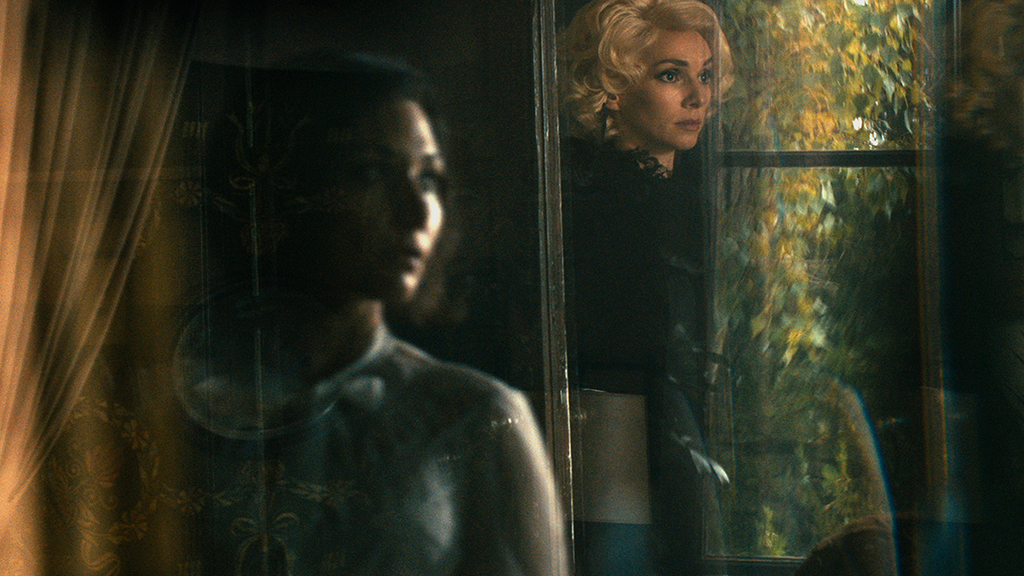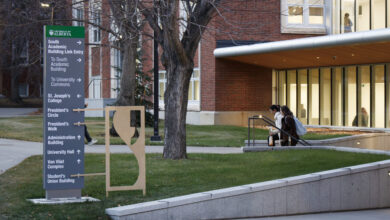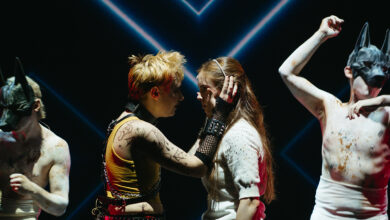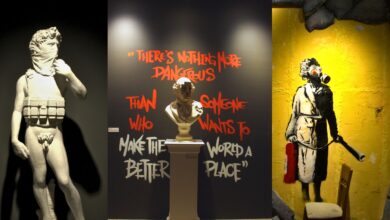The Duke of Burgundy challenges heteronormativity
 Supplied
SuppliedThe Duke of Burgundy
When: Friday, March 6 until Thursday, March 12
Where: Garneau Theatre (8712 109 Street)
Written By: Peter Strickland
Directed By: Peter Strickland
Starring: Sidse Babett Knudsen and Chiara D’Anna
Cost: $8 for students
What a shame that Fifty Shades of Grey has re-framed BDSM in our cultural psyche. For the bemused moviegoer, these erotic practices have been diluted to lip-biting, toe-curling responses to a peacock feather grazing a moisturized back. Grossly overlooked are the interpersonal dynamics of its players and all the thorny nuances of a relationship grounded in submission and humiliation.
But British director Peter Strickland has loftier ambitions in his striking third offering, The Duke of Burgundy. Drawing on the ‘70s sexploitation flicks of Spanish filmmaker Jess Franco, Strickland chronicles the everyday machinations of BDSM and roleplay. Rather than revel in the sex, though, of which there is very little here, Strickland highlights the mundane nooks of a submissive lifestyle: the detailed instructions, the rehearsed dialogue, the purchase of a customized bed meant for imprisonment.
Caught in this daily cycle of sex and roleplay are Cynthia (Sidse Babett Knudsen) and Evelyn (Charia D’Anna), two lesbian entomologists occupying a European villa. Strickland wisely omits geographical or historical ide-ntifiers, opting for an airy landscape that the characters criss-cross on bicycle. Most notable, however, is the film’s absence of men. In select scenes, a smattering of women flank Cynthia and Evelyn or serve as backdrops, easing the couple’s transgressions through the erasure of heteronormativity.
The Duke of Burgundy instead re-shapes their social subversions as sacrifices. In one of the film’s more discomforting scenes, Evelyn demands that Cynthia recite commands as she pleasures herself. Cynthia’s eyes widen with fear as she wracks her brain for more lines. “I don’t know what to say,” she finally confesses. Yet she persists in the awkward roleplay, one of the film’s many murky acts of love.
We start to wonder, however, whether that love is solely grounded in artifice and fantasy. Soon, the safe word stops applying and the power dynamics rupture. Evelyn persistently feigns a Dickensian persona, forced to scrub floors and rub her master’s feet. Cynthia grows weary of Evelyn’s endless instructions (“Try to have more conviction in your voice next time,” Evelyn says with little affect). The hallucinatory visuals ramp up as the couple struggles to achieve their next sexual high. The film relishes in a visual motif of butterflies and moths, à la Silence of the Lambs, which culminates in a disjointed nightmarish sequence at odds with the rest of the narrative.
But such artistic indulgences can be pardoned, given The Duke of Burgundy treats its characters and subject matter with such nuance and empathy. Cynthia and Evelyn, played with equal fortitude by Knudsen and D’Anna, are ideal foils for the dim leads of Fifty Shades, who operate as vacuous props for a whips-and-chains play. Strickland thankfully sees past such follies. He expertly builds erotic tension, but that eroticism never overshadows the heart of his story. A film about sex without the sex, The Duke of Burgundy deprives us of instant gratification for a more prickly kind of pleasure.




